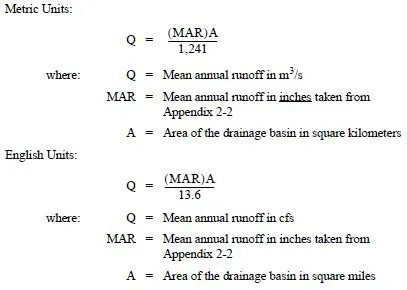The SBUH Method is best suited for WSDOT projects where conveyance systems are being designed and for some stormwater treatment facilities in eastern Washington. The SBUH Method was developed to calculate flow occurring from surface runoff and is most accurate for drainage basins smaller than 100 acres, although it can be used for drainage basins up to 1,000 acres. The SBUH Method should not be used where groundwater flow can be a major contributor to the total flow. While not all WSDOT projects are in urban basins, paved surfaces (similar to urban areas) that generate the majority of the total flow may make use of SBUH applicable for highway projects.
An SBUH analysis requires the PEO to understand certain characteristics of the project site, such as drainage patterns, predicted rainfall, soil type, area to be covered with impervious surfaces, type of drainage conveyance, and—for eastern Washington—the flow-control BMPs that are to be provided. The physical characteristics of the site and the design storm determine the magnitude, volume, and duration of the runoff hydrograph. Other factors, such as the conveyance characteristics of channel or pipe, merging tributary flows, and type of BMPs, will alter the shape and magnitude of the hydrograph. The key elements of a single-event hydrograph analysis are listed below and described in more detail in this section:
• Design storm hyetograph
• Runoff parameters
• Hydrograph synthesis
• Hydrograph routing
• Hydrograph summation
Several commercially available computer programs include the SBUH Method. See Chapter 1.
